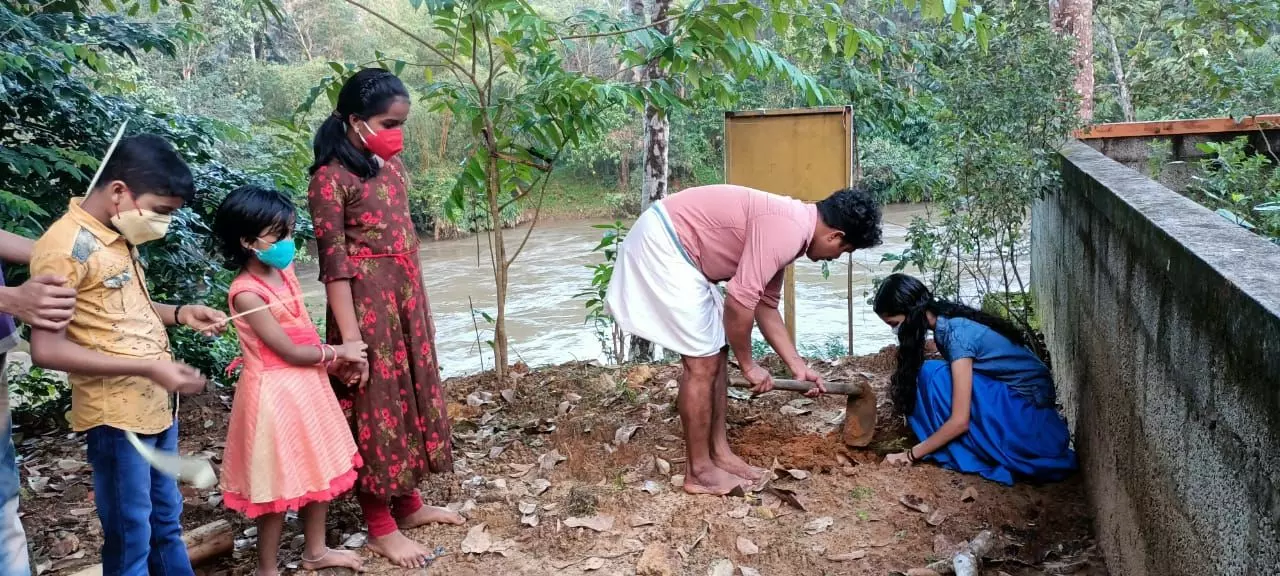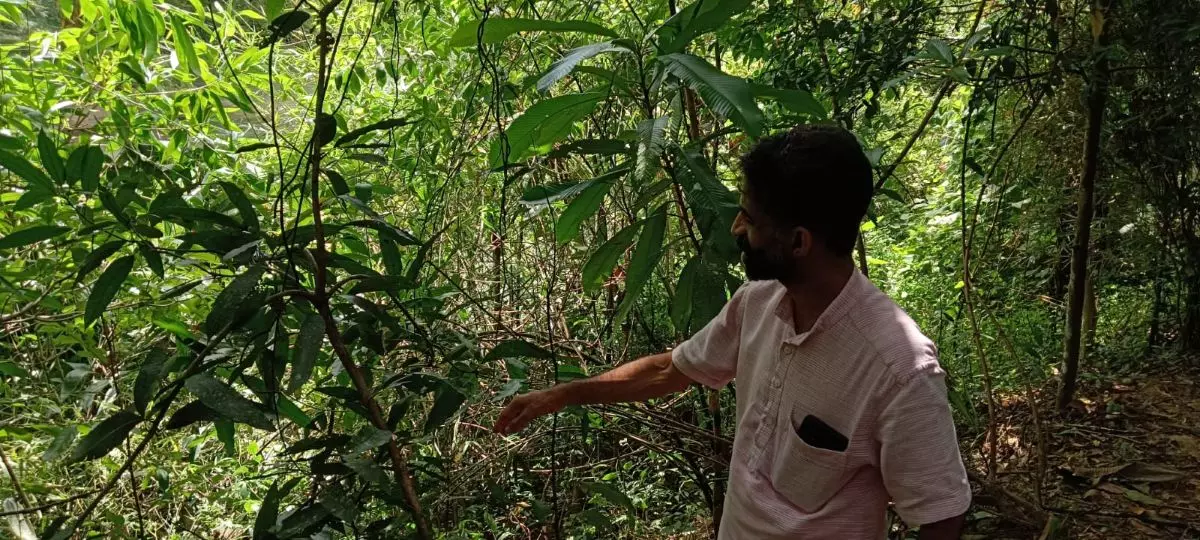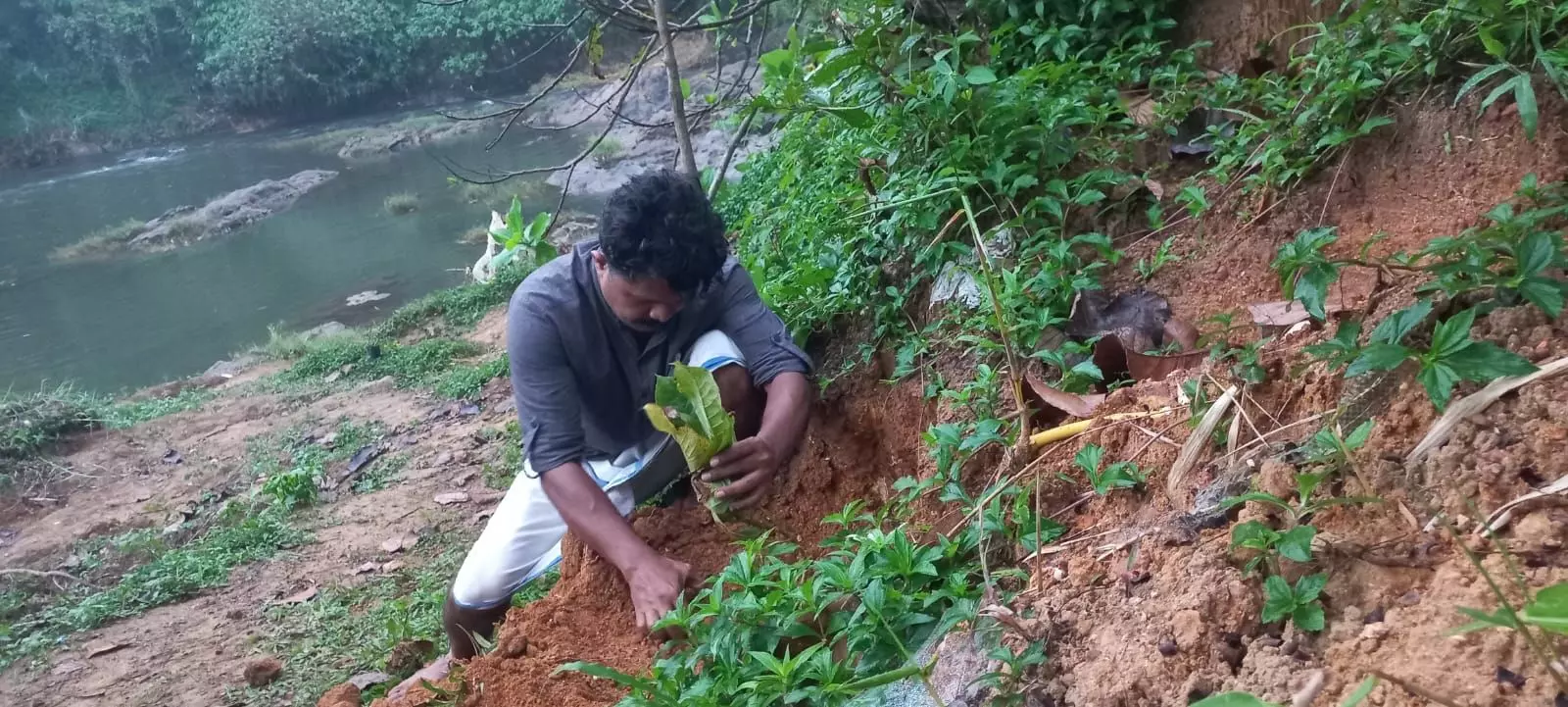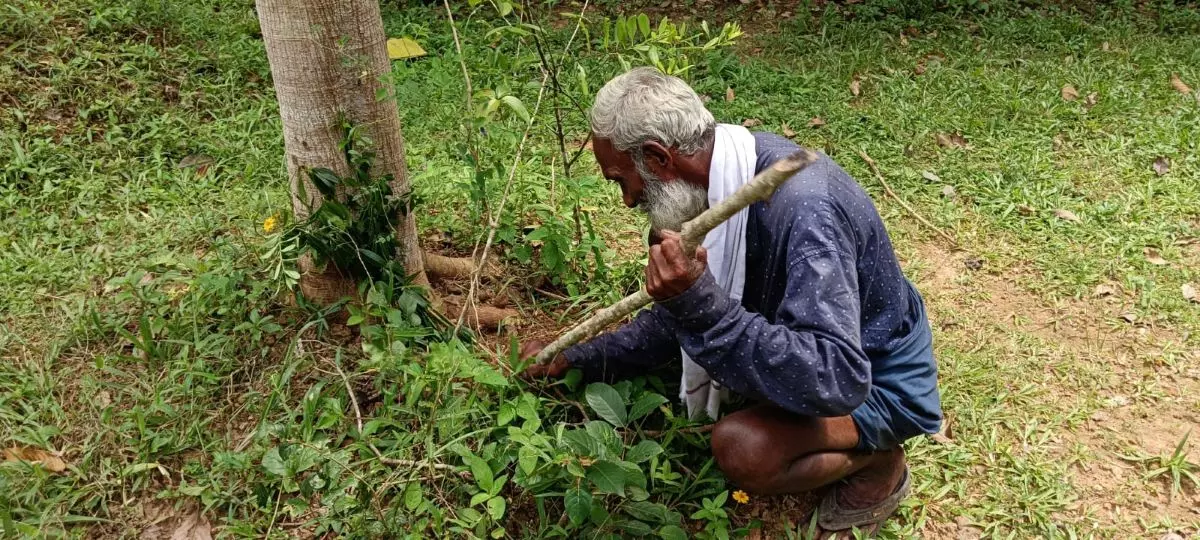Sometime in 2018, a group of people from Thellikkachal, a scenic village situated along the banks of the Vamanapuram River in the Thiruvananthapuram district of Kerala, visited the Jawaharlal Nehru Tropical Botanic Garden in Palode, a town in the same district, to purchase some saplings. It was no random trip. The idea was to establish a forest along the banks of the Vamanapuram River to...
Sometime in 2018, a group of people from Thellikkachal, a scenic village situated along the banks of the Vamanapuram River in the Thiruvananthapuram district of Kerala, visited the Jawaharlal Nehru Tropical Botanic Garden in Palode, a town in the same district, to purchase some saplings. It was no random trip. The idea was to establish a forest along the banks of the Vamanapuram River to protect the village from soil erosion during the monsoon. A one-acre stretch along the river banks, part of which was the property of a nearby temple, had been chosen for the experiment. What began as a modest initiative with 50 saplings of different species has, over the years, transformed into a small forest named “Kalareevanam” — Kalaree is derived from the local temple dedicated to goddess Kalariyil, while vanam is forest in Malayalam.
To ensure proper care of the saplings, students residing in the vicinity were roped in. The experiment proved successful. The organisers also invited devotees of the nearby temple to plant saplings dedicated to their favourite deities. Today, there are more than 250 trees — a board has been put up, displaying names of the important trees — in the tiny forest in that one-acre patch of the riverbank of the 88-km-long Vamanapuram river, which originates from Chemmunjimottai, in the Ponmudi Hills of the Western Ghats in southern Kerala.

When the project started in 2018. By special arrangement
It all started in 2017, during an informal discussion, when members of the Phoenix Library in Thellikkachal first conceived the idea. But they were uncertain about success and how to proceed with the plan. “We have witnessed numerous sapling planting drives that concluded with the inaugural photo opportunities and gatherings. A sapling requires proper care, and thus we decided to experiment with just 50. Once we started, we received remarkable support from the community and the Pullampara Grama Panchayat [of which Thellikkachal is a part]. We did not look back,” said Ratheesh Kumar V, librarian of the Phoenix Library and a member of the group.

Ratheesh Kumar V, an active member of the group. Photo by MT Saju
However, identifying the precise location for planting the saplings and enhancing the green cover proved to be a challenge. The Vamanapuram River traverses the highland and midland regions of Thiruvananthapuram and Kollam districts before flowing into the Anchuthengu lake in Chirayinkeezh. Although it supports 29 panchayats and one municipality within its basin, the river is facing pollution, primarily owing to human activities along its 88-km stretch. Additionally, encroachment and deforestation along the riverbanks have led to significant flooding during the monsoon, resulting in substantial soil erosion. The Central Pollution Control Board had reportedly found severe pollution and contamination in the Vamanapuram River recently, prompting a meeting of the National Green Tribunal, the River Rejuvenation Committee of the Kerala State Pollution Control Board and district administrations earlier this year. The irrigation department, it was reported, had been tasked with drawing up an action plan, which included desilting of the river and construction of side protection walls at critical points along the Vamanapuram.
The Phoenix Library team had identified the current location in Thellikkachal for the planting of the saplings, mainly owing to the river’s bend at this point. According to the villagers, this bend causes water to flow into the surrounding areas, resulting in significant flooding during the monsoon. The land adjacent to the river is owned by the state government, while a nearby section is under the ownership of the Kalariyil Devi temple. When contacted, both the temple officials and the Pullampara Grama Panchayat gave their consent and expressed their willingness to support the initiative.
“We selected tree species that are native to forests, rather than the popular varieties commonly found in our vicinity. Specifically, we avoided fruit-bearing trees. Each tree sapling was planted with the intention of raising awareness among the community regarding the importance of trees, the environment, and the enduring relationship between humanity and nature,” said Manoj KS, secretary of the Phoenix Library, who works as an associate professor at the Government College, Nedumangad. The botany department at Government College, Karyavattom, provided guidance to the team in naming the plants and their cultivation.

File photo of Manoj KS, another member of the group, planting a sapling. By special arrangement
Watering the plants required consistent monitoring. Owing to a prohibition on using electricity to draw water from the river, the team had to explore alternative solutions. They irrigated the plants with help from the panchayat. “This was the most difficult period we encountered. Some plants nearly withered during the summer despite our efforts to water them twice. Once the trees began to grow, we encountered no further issues. They thrived rapidly and robustly, owing to the attention provided by our volunteers, especially students from local schools,” said Manoj.
The initial expenditure of the project amounted to Rs 14,000. The money was provided by the Pullampara Grama Panchayat, the first fully digitally literate panchayat in India in 2022, which had won first place in the ‘Best Village Panchayat’ category at the 5th National Water Awards in 2023, owing to its significant water conservation initiatives. “When we first heard about this great initiative, we extended our support to the team by supplying bamboo saplings, which are beneficial for preventing soil erosion along the riverbank. The outcome has been positive. I am pleased to note that the green cover has expanded over the past two years. This initiative is truly commendable,” said PV Rajesh, president of the Pullampara Grama Panchayat. “We need more initiatives of this nature to identify solutions for soil erosion in other stretches of the river as well,” he added.
As the plants began to flourish, creating a lush environment, the team sought to reward the children who had diligently nurtured the saplings. This initiative led to the establishment of a butterfly park within Kalareevanam. “A group of three travelled to the Thettekkadu Bird Sanctuary (near Kerala’s Kothamangalam town) to observe the butterfly park there as a model for our own. A retired senior warden provided assistance, and we inaugurated the park in 2022. We introduced several special trees that are known to attract butterflies to the park,” said Ratheesh Kumar.
Today, Kalareevanam boasts over 250 trees, many of which have flourished, creating a dense greenery. Although water from the river flows into the forest during the monsoon, it does not cause significant damage, owing to the presence of the trees; the trees have greatly aided in reducing soil erosion, say villagers. Now, Kalareevanam draws people from neighbouring areas, who visit the forest to plant saplings. Like Manikantan Nadar, a 65-year-old farmer from nearby Chembankodu village, who spoke of his intention to plant a sapling at Kalareevanam each week. “I have a passion for trees. I cannot find a more suitable place to plant trees than Kalareevanam. I visit here weekly and contribute in any way I can,” he said.

Manikantan Nadar, a farmer from a neighbouring village, visits each week to plant saplings. Photo by MT Saju
The Kalariyil Devi temple preserves a sacred grove where daily pooja is conducted. “We encourage devotees to plant trees corresponding to their zodiac signs. Many individuals have already participated in this initiative. We fully support the team for their commendable efforts. This presents a wonderful opportunity for us, as our temple is recognised for its noble cause,” said Mohanan Pillai, president of the Kalariyil Devi temple in Thellikkachal.
While environmentalists commend such community efforts, they also voice a word of caution — initiatives such as the Kalareevanam project require adequate support and backing, said M Anathakrishnan, an activist and environmentalist. Highlighting the need for sustained efforts, he explained that while many groups begin with great enthusiasm, they ultimately struggle to achieve their goals. “We cannot expect immediate results in situations like this, but projects like this will certainly be beneficial,” he added.
The Kalarreevanam team, however, shows no signs of slowing down. For members like Ratheesh Kumar, Manoj, and numerous others, it is a continuing journey. The team is gearing up to plant 1,000 saplings of Kambakam (hopea ponga), a tree known for its strong roots that help mitigate soil erosion during river flooding, along the adjacent stretch of the riverbanks. “The pollution resulting from waste disposal and deforestation poses a serious risk to the river's survival. We have gathered the Kambakam saplings and will commence this initiative shortly,” Rathesh Kumar and Manoj told The Federal.






